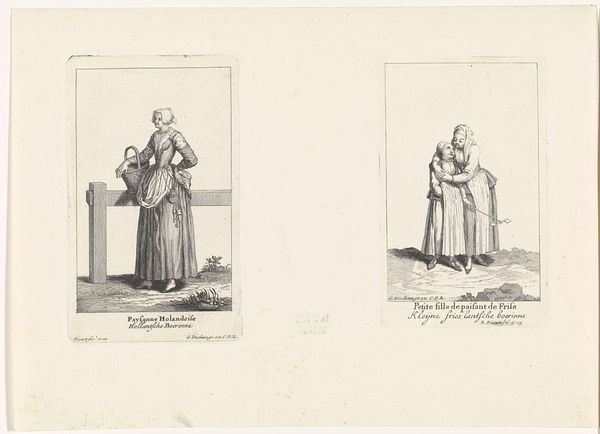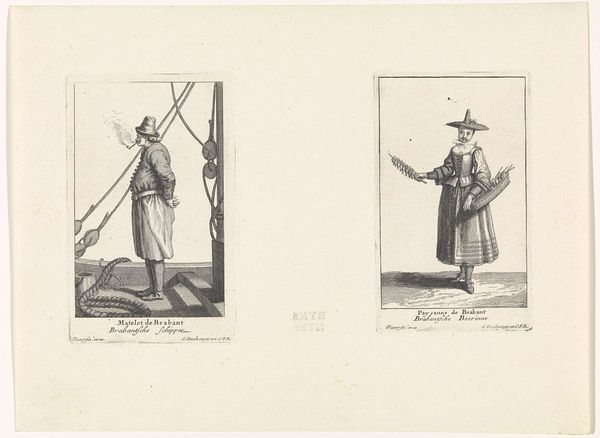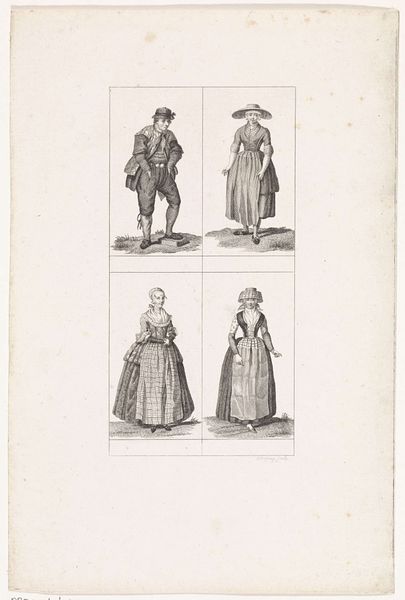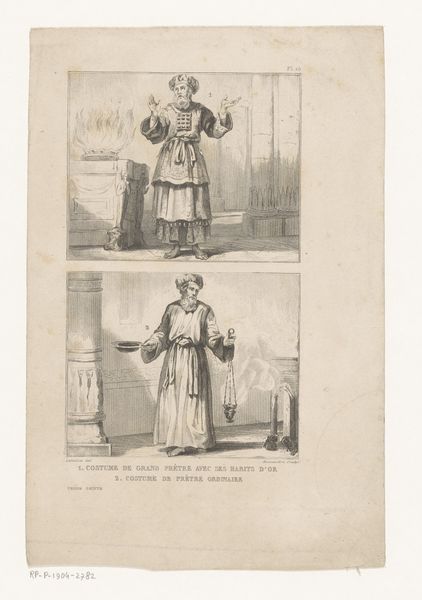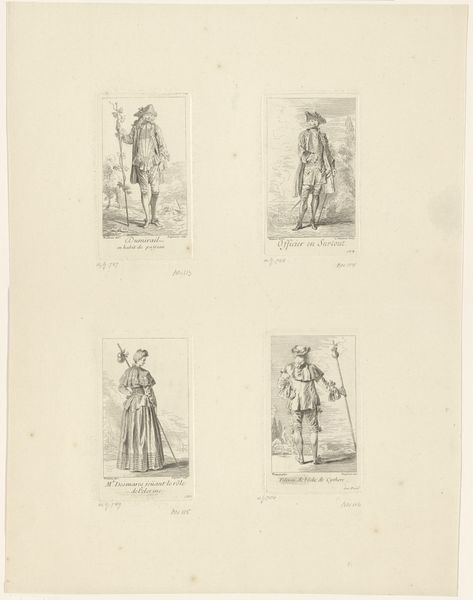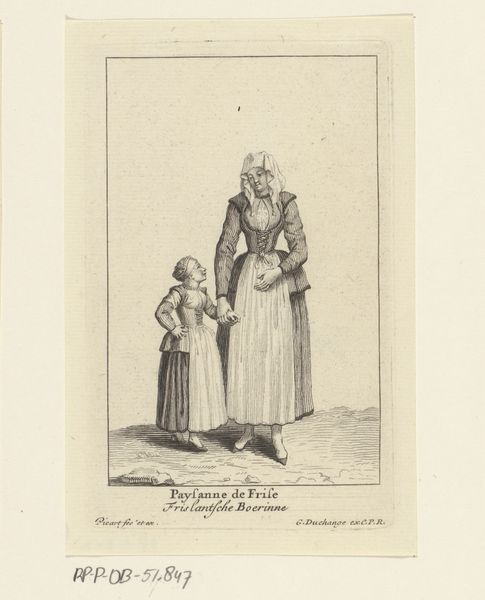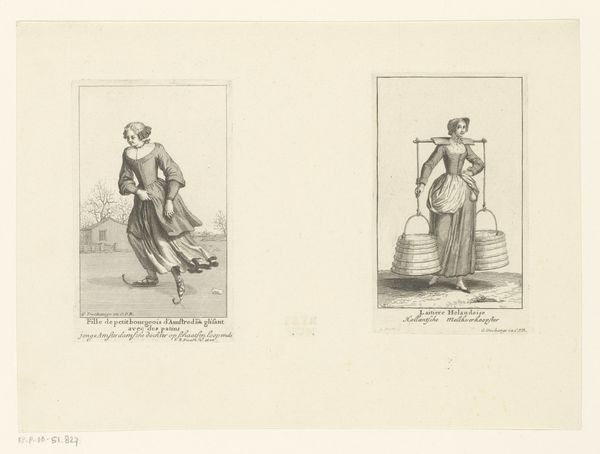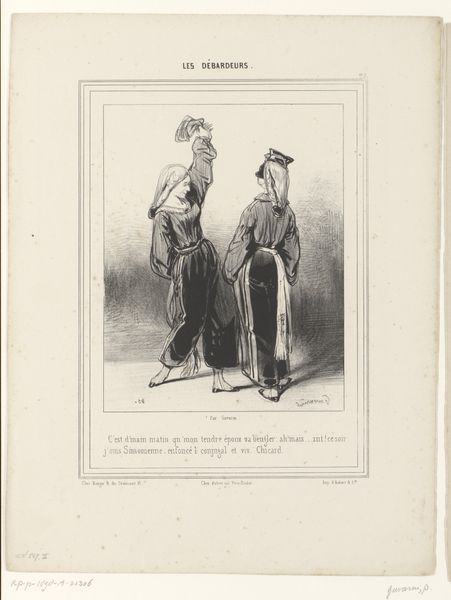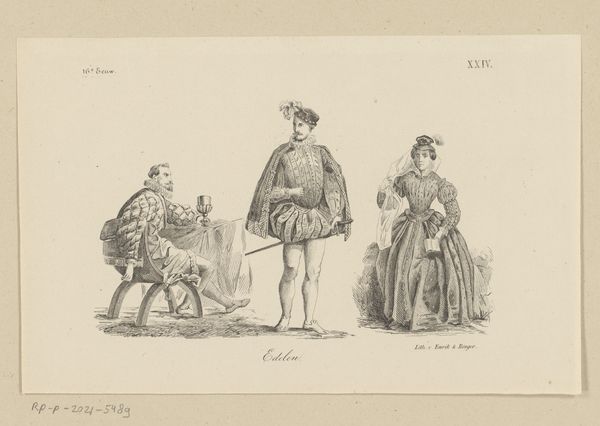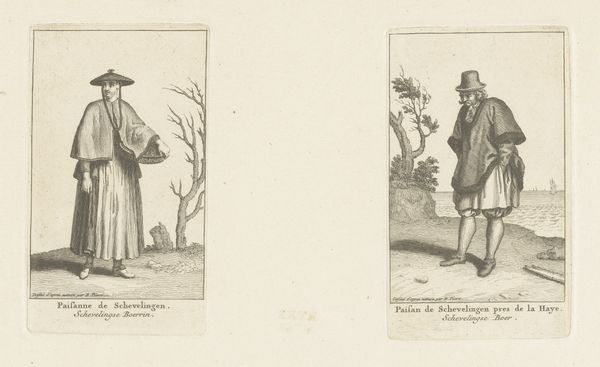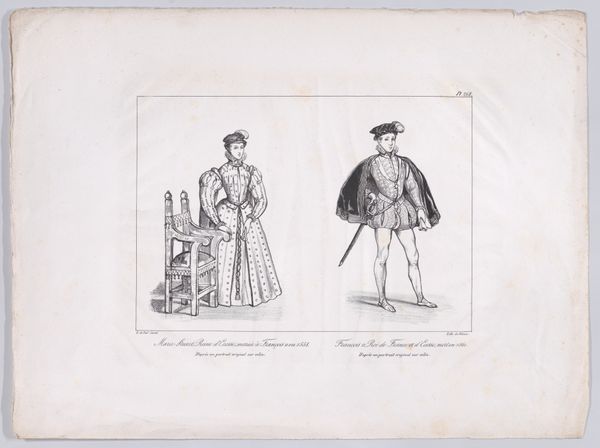
print, engraving
#
portrait
#
dutch-golden-age
# print
#
old engraving style
#
personal sketchbook
#
genre-painting
#
engraving
Dimensions: height 119 mm, width 71 mm, height 119 mm, width 71 mm, height 189 mm, width 255 mm
Copyright: Rijks Museum: Open Domain
Curator: This engraving by Bernard Picart, dating to 1728, is titled "Amsterdamse visboer en Amsterdams viswijf," which translates to "Amsterdam Fishmonger and Amsterdam Fishwife." It currently resides in the Rijksmuseum. Editor: My initial impression is one of austere dignity, despite its seemingly commonplace subject matter. There’s a crisp, almost brittle quality to the lines, especially in rendering their clothing. Curator: Absolutely, and considering Picart was French but worked extensively in the Netherlands, it’s intriguing to explore how his cultural lens may have shaped these representations. Do these portrayals challenge or reinforce existing stereotypes around gendered labor? What narratives are left out of this image, for example the perspective of someone from a lower economic background? Editor: The medium itself, engraving, is key. Each line etched into the plate demands intention and control. We can appreciate the engraver’s skill in translating the textures of their garments - the woman’s layered skirt compared to the man's looser tunic. And consider how those etched lines themselves stand in for the labor, not only in its rendering, but its execution. This process emphasizes the physical effort involved in creation and evokes the labor of those being represented. Curator: Exactly, and through a feminist lens, one might see the positioning of the woman, with her cloth, hinting at domestic duties intertwined with her trade. While the man presents with open pockets suggesting transactions and power, the woman holds something related to keeping clean fish or a potential sales instrument that speaks of the tools of the fish trade, linking labor, gender, and visibility within the public sphere. Editor: This pairing also prompts us to think about distribution networks. The visual language suggests established hierarchies – are we looking at primary sellers versus secondary ones? I mean, what is being consumed and traded here? And whose stories are being visualized or commodified through this engraving? The artist would profit from this image by those wishing to learn about the clothing or to collect images that define professions from Amsterdam's culture and market. Curator: I agree; through our different perspectives, it allows us to excavate stories and questions that broaden its historical context within an intersectional social landscape. Editor: Precisely. Examining the piece from a materials-and-production standpoint helps contextualize its original intent, giving modern audiences additional interpretations regarding production value and what makes this art from labor so impressive.
Comments
No comments
Be the first to comment and join the conversation on the ultimate creative platform.
